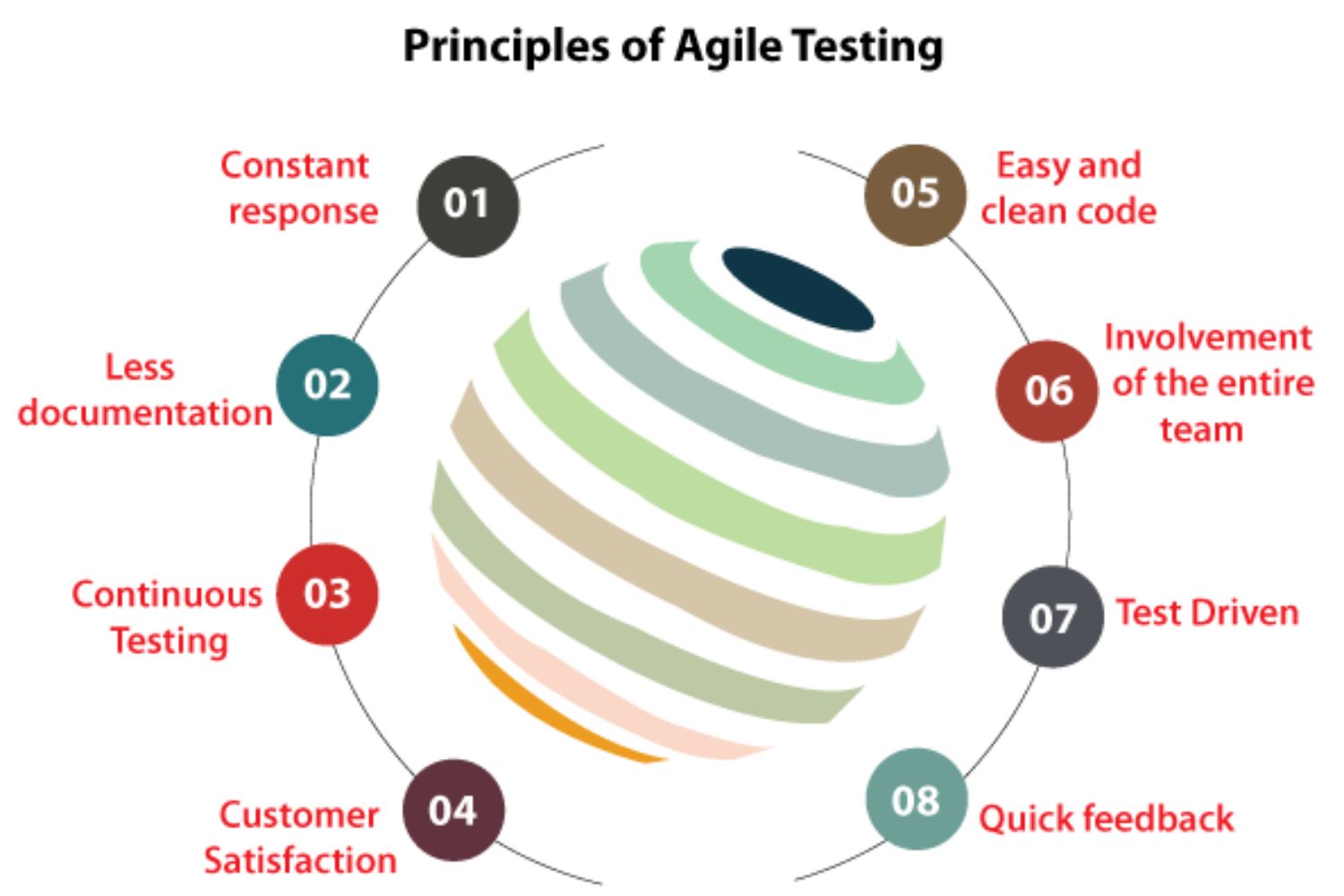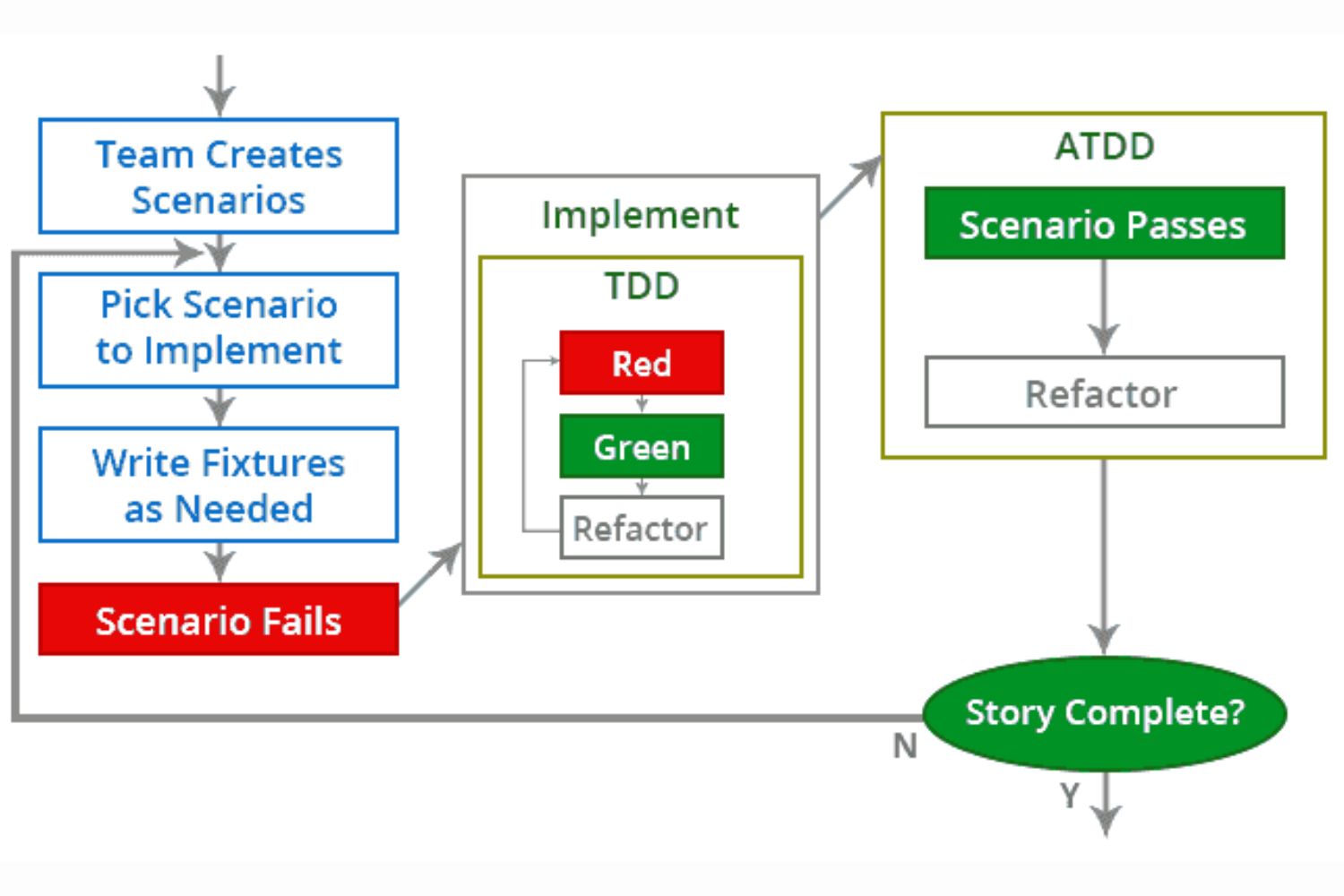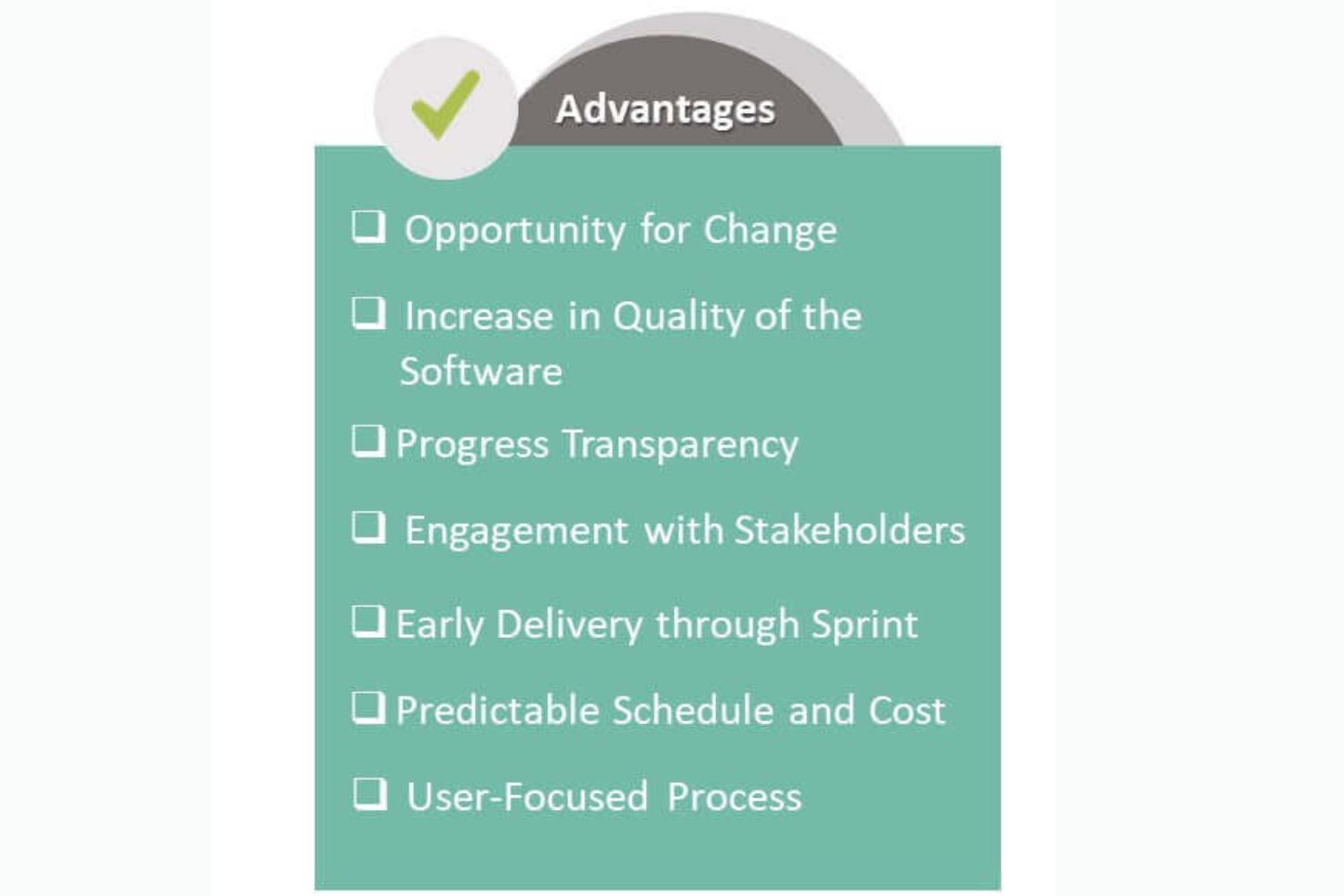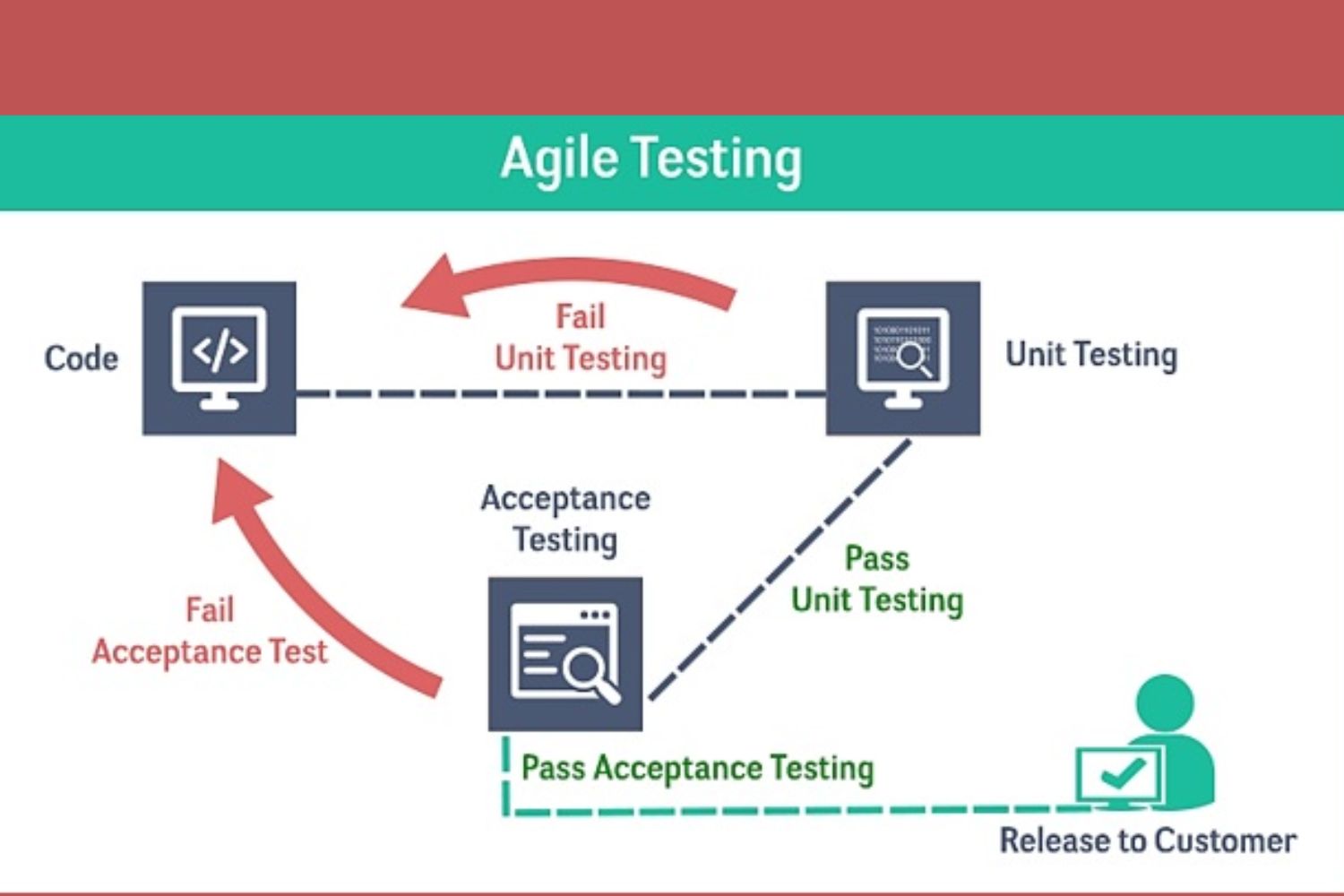
AGILE TESTING
Software applications are tested using an approach known as “agile testing,” which is based on the ideas of agile software development. Agile testing involves the entire project team as well as particular experts and testers. Agile testing is done in tandem with all other development phases, including requirements, design and coding, and test case generation. It is not a stand-alone phase. Agile testing occurs concurrently with the entire development life cycle. Agile testers work with members of the development team across the whole software development life cycle. They assist in creating software that meets client needs, has superior design, and consequently produces better code. Agile testing uses shorter time intervals known as loops or iterations. This methodology, which offers a better prediction of feasible items in a shorter amount of time, is also known as the delivery-driven strategy. Agile testing is a loosely defined process that falls under the category of dynamic testing . It is carried out on a regular basis during each Software Development Lifecycle (SDLC) iteration . At some point throughout the agile testing process, the main priority for agile test engineers is customer satisfaction.
PRINCIPLES OF AGILE TESTING
Reducing the length of the feedback iteration: Agile testing involves the testing team learning about the quality and progress of the product at each iteration. As a result, constant feedback lowers both the cost of correcting and the time it takes to respond to feedback.

Agile testing is conducted concurrently with testing :It is not a separate stage. It is carried out concurrently with the development stage. It guarantees that the features that were added during that iteration are finished. Testing is not postponed for a subsequent .
Agile testing is not a stand-alone step : It is done in tandem with other testing. It is done in tandem with the development phase. It ensures that the features added in that iteration have been completed. Testing is not delayed for a later phase.
Engagement of each member: Agile testing involves all members of the development and testing teams. Its developers are diverse and well-informed.
Continuous response: Agile testing facilitates the continuous delivery of answers or comments. The product can thus satisfy the needs of the business.
Customer satisfaction: Throughout the development process, customers are exposed to the product through agile testing. The customer has the ability to update and amend requirements at any point during the development process, and they can also alter tests to reflect these modifications.
Test-driven: To reduce development time, agile testing requires testing to be done concurrently with the development process. However, testing is done either during the typical software development process or after the software is implemented.

AGILE TESTING METHODOLOGIES:
Test-Driven Development (TDD): It is a software development methodology that involves writing unit test cases prior to writing the program’s real code. It is an iterative process that involves three steps: refactoring, unit test creation, and programming.
Behavior Driven Development (BDD): is an agile software testing methodology that tries to model and create the application based on the kinds of user behavior that the program’s intended user base is likely to exhibit. It promotes cooperation between the customer representatives, quality specialists, and developers.
Exploratory Testing: In this type of testing, the tester is free to experiment with the code and produce software that is both functional and efficient. It is beneficial to identify undiscovered threats.
Acceptance Test-Driven Development (ATDD): It involves client representatives, developers, and testers working together to discuss needs and potential pitfalls. This collaborative approach minimizes errors before coding ever starts.
Extreme Programming (XP): Extreme programming is a client-focused methodology that assists in delivering a high-quality product that satisfies the needs and expectations of the customer.
Testing in Sessions: It is a time-bound, methodical strategy that divides exploratory testing into several sessions of progress. This is time-boxed testing that is conducted continuously for 45 to 90 minutes at a time. The tester drafts a charter document throughout the session, which contains a variety of details concerning their testing.
The Dynamic Software Development Method (DSDM) : It is a framework for agile project delivery that offers a structure for developing and managing systems. Users, developers, and testers can all utilize it.
Crystal Techniques: Instead of concentrating on procedures and equipment, this style emphasizes people and their relationships while working on the project. Three factors determine whether the crystal approach is appropriate;
the size of the team
the project’s criticality
and its priority.
BENEFITS OF AGILE TESTING
Time-saving: By introducing agile testing, cost estimates can be made more clear, which helps to save both time and money.
Minimizes documentation: Agile testing requires less documentation to be carried out.
Boosts software productivity: Agile testing contributes to lower mistake rates, higher-quality products, and higher software productivity.

Increased productivity: Agile software testing breaks up the job into manageable chunks so that developers can concentrate better and finish one section before moving on to the next. This method aids in finding little discrepancies and increases productivity.
Boost product quality: Regular user and stakeholder feedback is gathered during agile testing, which aids in improving the software product quality.

AGILE TESTING CYCLE
Impact Assessment: Also referred to as the feedback phase, this is the initial stage of the agile testing life cycle in which user and stakeholder input and reactions are gathered. The test engineers can set the goal for the following cycle phase with the help of this phase.
Agile Testing Planning: The testing process schedules, frequent meetings, and deliverables are planned at this phase in collaboration with developers, customers, test engineers, and stakeholders.
Release Readiness: The third stage of the agile testing lifecycle is when the test engineers assess fully developed features to determine whether they are ready for live deployment or whether they need to be redirected to an earlier development phase.
Daily Scrums: During this phase, daily morning meetings are held to discuss testing and set daily goals. To help test engineers understand the state of testing, daily targets are defined.
Test Agility Review: The final stage of the agile testing process involves holding weekly meetings with stakeholders to discuss and appraise the status of the project in relation to the objectives.
SCOPE OF AGILE TESTING:
If testers do not automate the risks associated with the quality of the product, then agile itself is a scope creep. Moreover, the following circumstances are optimal for agile testing to function:
First, comprehensive unit or component testing is performed .First and foremost, testing’s main goal is to find software flaws so they can be fixed. Furthermore, testing cannot prove that a product works correctly in every situation. In other words, it can only prove that certain circumstances prevent it from operating as intended.
Second, each sprint includes GUI smoke testing . Code inspection and execution in a variety of settings and circumstances are frequently included in the scope of software testing. It also entails looking at the code’s features.
Finally, members of the testing team have different roles. whereby the process of developing software can be improved with the use of data obtained from software testing.
JOB ROLES IN AGILE TESTING
1.The Agile Tester
2.The Scrum Master
3.The Developer
4.The Product Owner
SALARY:
The salary for Agile Testing range from 13LPA TO 35 LPA
COURSE HIGHLIGHTS:
1. Suited for Students, freshers , professionals, and corporate employees.
2. Live Online Classes.
3. 4 month program
4. Certificate of completion
5. Decision Oriented Program of Analysis
6. Live Classes by highly experienced faculties.
7. Hands-on experiences with real-life cases studies.

CONCLUSION:
To sum up, case studies on agile approach are useful resources for experts across different industries. Professionals can learn from the experiences of others and apply those lessons to their own work thanks to the real-world examples and insights into particular difficulties and solutions. Case studies provide a deeper comprehension of intricate circumstances by emphasizing the difficulties encountered, the tactics used, and the results obtained . Case studies have many advantages for professionals. They provide a chance to examine and assess various strategies, techniques, and best practices.

